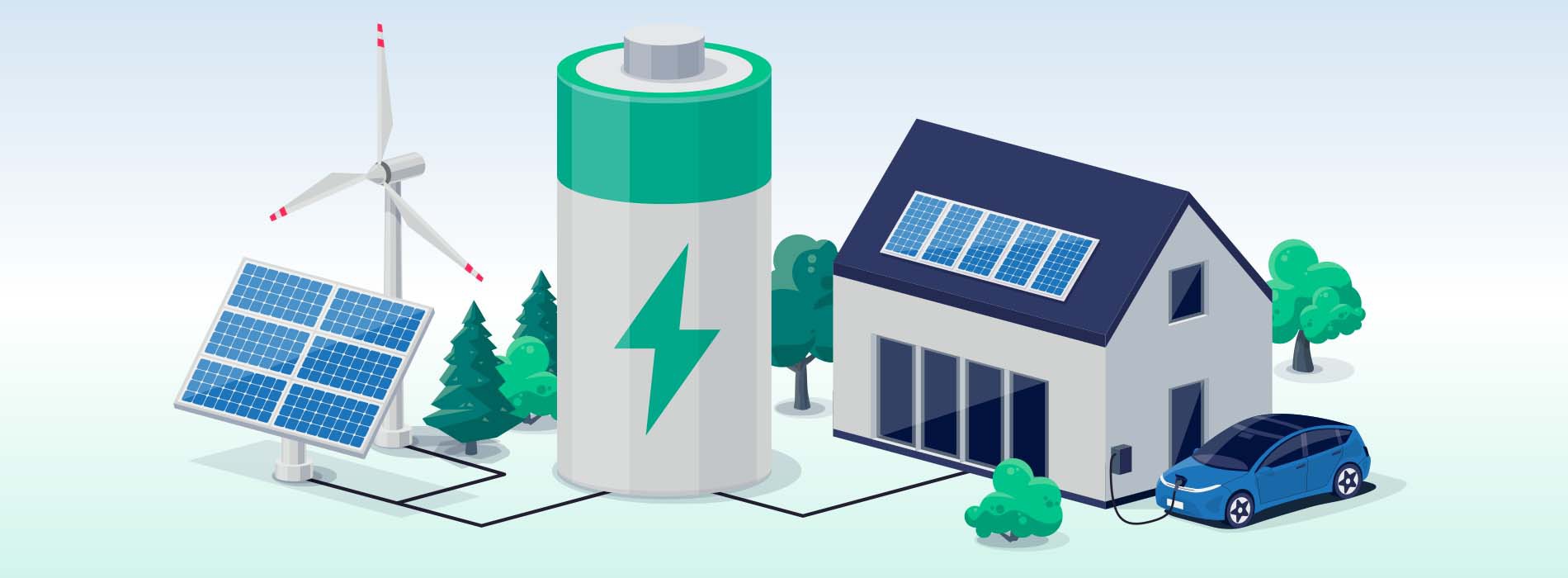Streamlined Permitting Needed to Scale Up California’s Energy Storage Capacity

In 2021, the United States suffered at least 20 separate billion-dollar extreme weather disasters. From Western wildfires to Texas ice storms, power grids have been under siege.
Small-scale energy storage systems can offer relief to our grids while providing consumers with backup power during outages. The challenge is that installing these “behind-the-meter” distributed energy resources is hampered by a lack of standardized local government permitting and approval processes. The lack of a standardized and streamlined system can add significantly to project costs and hold up system deployment.
To turn this situation around, the Center for Sustainable Energy and a group of partners* are examining local government regulatory barriers to energy storage as part of a project funded by the California Energy Commission. The goal is to develop an Energy Storage Permitting Guidebook that outlines best practices and proposes a standard process for permitting energy storage systems of less than 1 megawatt. Simplifying and standardizing permitting procedures for new storage systems will have benefits for authorities having jurisdiction (AHJs), installers and consumers.
Accelerating energy storage
Energy storage systems can charge from a wide range of sources. This guidebook is focused on commercially available small-scale systems. At this time, these systems are mainly composed of battery-based storage connected to the electrical grid and to local sources of power such as solar photovoltaic panels. Energy storage systems can charge from the grid when utility rates are low, and then send power back to local circuits when utility rates are high or to supply emergency power.
The State of California is evolving building codes and incentive programs to accelerate the use of energy storage.
- In August 2021, the California Energy Commission approved a new energy code, making California the first state to require solar and battery storage for new commercial buildings. The code also calls for designing single-family homes so that battery energy storage can be easily added to solar energy systems, which are already required for new housing.
- To help Californians with low incomes in high-risk fire areas susceptible to power outages, the California Public Utilities Commission broadened the Self-Generation Incentive Program to boost energy storage by dedicating nearly half of its $1.2 billion budget to an "equity resilience" rebate. The rebate covers nearly 100% of the cost of an average energy storage system for qualifying businesses and homeowners.
What we’ve learned so far about roadblocks
Through a series of stakeholder workshops and surveys conducted to inform the guidebook, we’ve heard some recurring issues cited by installation contractors, AHJs (such as building and safety departments) and manufacturers.
Issue 1. Lack of Information
Permitting agencies often highlighted a lack of sufficient information on site plans and a lack of understanding by installers of the electrical code – both issues that can be remedied by better communication and coordination.
Issue 2. Lack of Consistency
Installers often highlighted a lack of consistency across permitting authorities and frequently shifting requirements that increase costs for end users, which may push customers to downsize their systems or abandon the project entirely.
Issue 3. Rapid Technological Change
Both permitting authorities and installers pointed to the rapid pace of change as a major challenge. Equipment manufacturers are constantly innovating, which creates many benefits, but also means that building codes struggle to keep up and that permitting authorities and installers need ongoing education.
When we asked local government building officials what would improve their agency’s energy storage permitting, they provided three key areas for improvement:
- Ensuring that installers are trained and qualified to install energy storage and reconfigure electrical systems to accommodate it.
- Additional education and training on the application and interpretation of codes and standards so their agency’s departments and installers are working from the same understanding.
- Standardizing the permitting process so that installers, end-users, plan checkers and field inspectors can all understand the requirements for installing systems quickly and safely.
Standardized processes can reduce the currently disparate and confusing energy storage permitting landscape to only the most relevant steps and fees, speed paperwork and cut costly delays. California has achieved success with similar efforts to streamline permitting and requirements for rooftop solar and electric vehicle charging stations.
Over the next few months, the Energy Storage Permitting Guidebook team will continue analyzing the current state of energy storage permitting in preparation for issuing best practices and actionable recommendations for speedier processing and accelerated growth.
---------------------------------------------
*Partners in the guidebook are Pacific Northwest National Laboratory, Guidehouse, California Solar & Storage Association and U.S. Department of Energy National Renewable Energy Laboratory.


